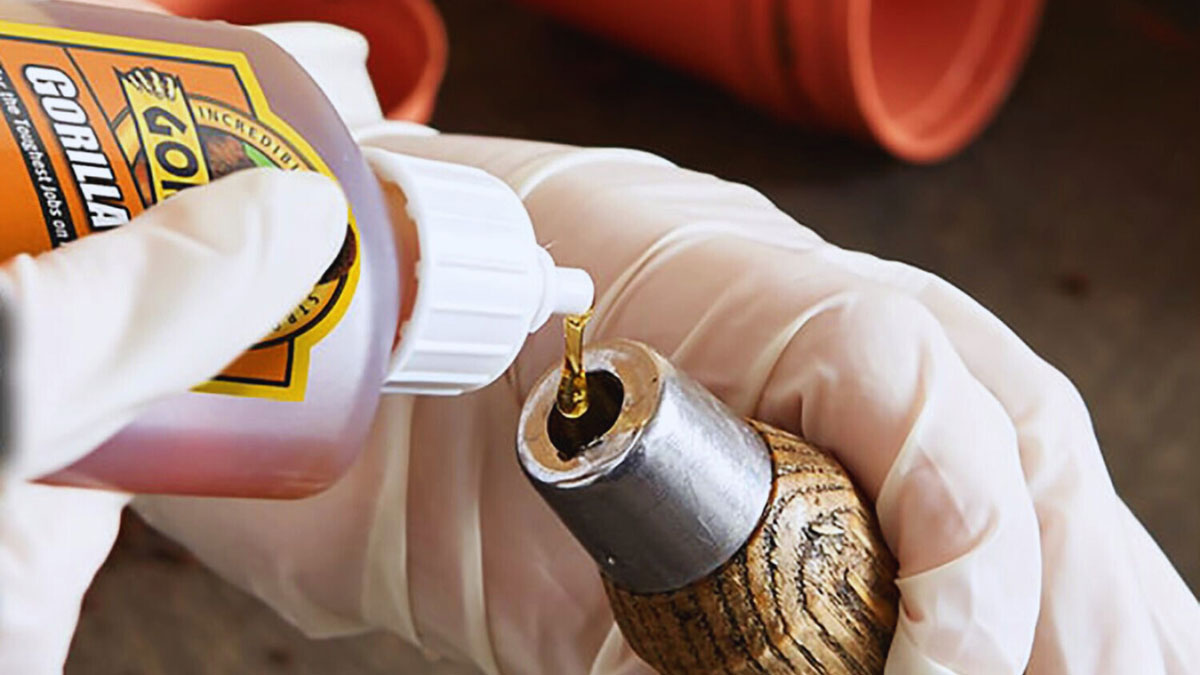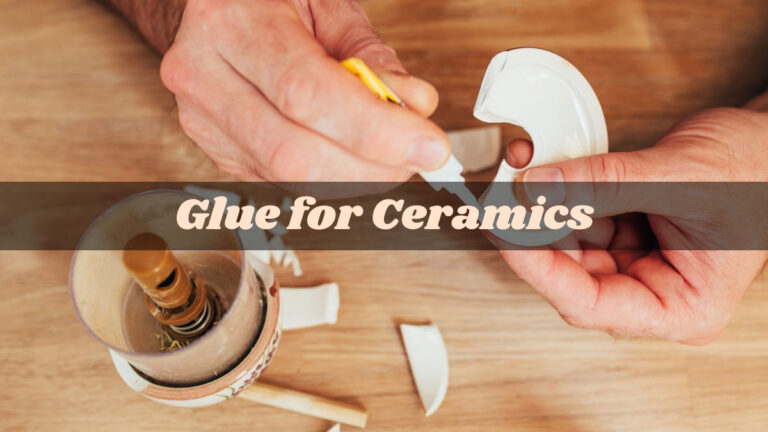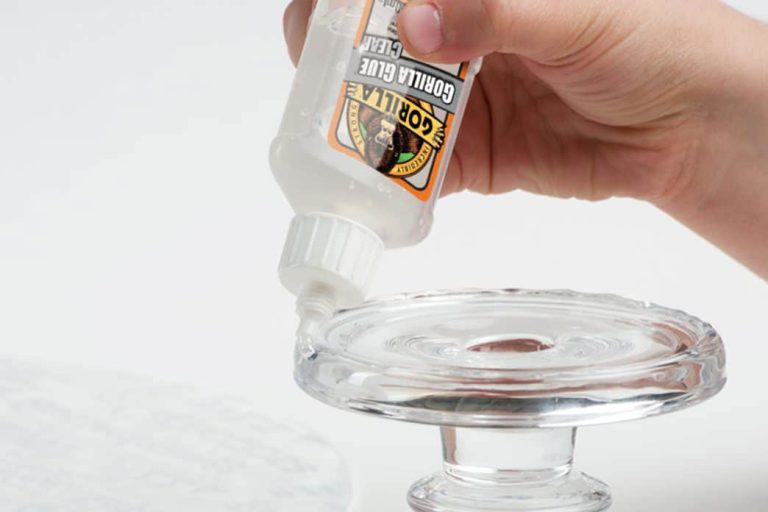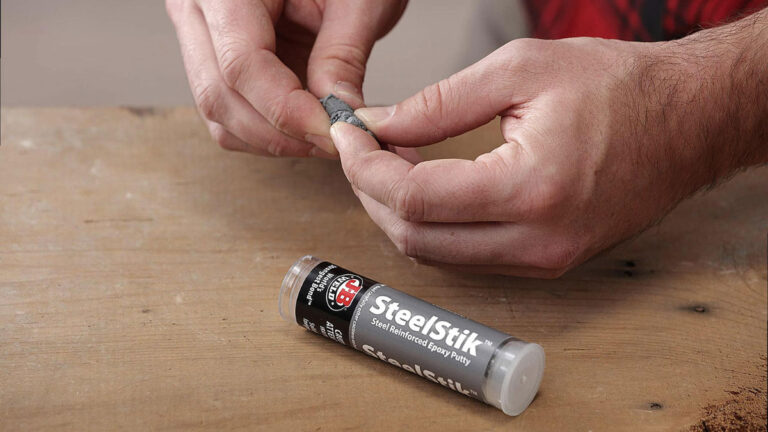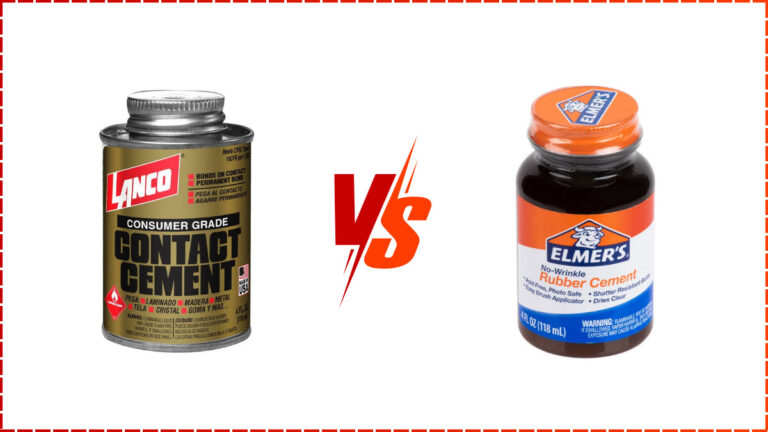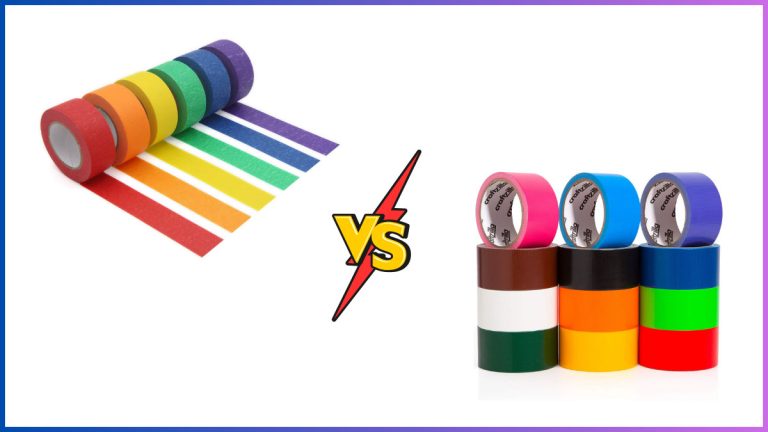What Glue Works on Metal: Best Adhesives for Strong Bonds
When it comes to DIY projects or repairs involving metal, finding the right adhesive can be a game-changer. Not all glues are created equal, and using the wrong type can lead to weak bonds and frustrating failures. So, what glue works best on metal?
Whether you’re fixing a broken metal object or working on a creative project, understanding which adhesives provide the strongest and most durable bonds is crucial. In this guide, you’ll discover the top glues that work effectively on metal, ensuring your projects stand the test of time.
Key Takeaways
- Types of Metal Glue: Epoxy, polyurethane, and superglue are the most effective types of adhesives for metal, each suited for different applications.
- Advantages of Metal Glue: Glue offers ease of application, lightweight, aesthetic appeal, uniform stress distribution, and flexibility over traditional bonding methods like welding and fasteners.
- Application Techniques: Proper surface preparation, selecting the right glue, and understanding drying and curing times are crucial for achieving strong and durable bonds.
- Best Glue for Different Metals: Epoxy works best for aluminum, steel benefits from both epoxy and polyurethane, copper requires cyanoacrylate or conductive epoxy, and brass can use both epoxy and superglue.
- Factors to Consider: Strength, durability, resistance to elements and chemicals, and ease of use are key factors in choosing the right adhesive for metal projects.
Why Choose Glue for Metal
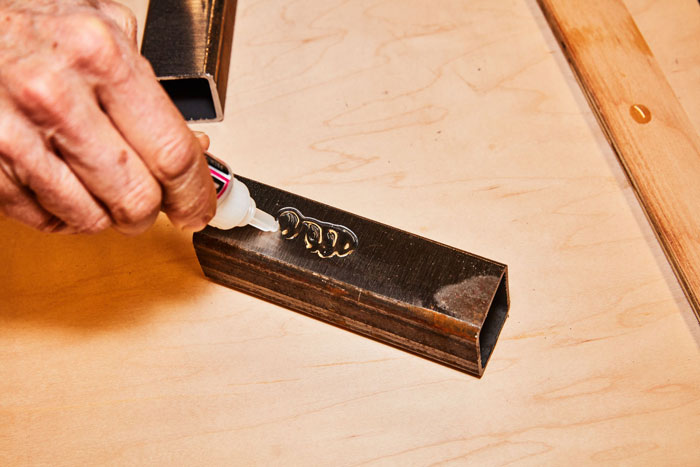
Adhesives have become a valuable tool in metalworking, offering several advantages over traditional methods like fasteners and welding. Choosing the right glue can ensure strong and durable bonds for your projects.
- Ease of Application: Metal glue requires less skill than welding and eliminates the need for specialized equipment. Even without technical expertise, you can achieve reliable results.
- Uniform Stress Distribution: Glue evenly distributes stress along the bonded area, reducing the chances of material fatigue. Fasteners, like screws or bolts, can create stress points that may weaken over time.
- Lightweight: Adhesives add minimal weight to the structure. Welding can be heavy, depending on the materials and methods used.
- Aesthetic Appeal: Metal glue provides a clean bond with no visible joints. Welding and fasteners often leave marks or require further finishing.
- Flexibility: Adhesives allow for different material combinations. You can bond metal to non-metal surfaces, unlike welding which is limited to similar materials.
Types of Glue for Metal
Choosing the right adhesive for metal ensures your projects achieve robust, durable bonds. Below, find the most effective types of glue for metal, each suited for different kinds of applications.
Epoxy Metal Glue
Epoxy glue for metal provides strong and durable bonds, making it ideal for heavy-duty applications.
Key Features:
- Two-Part Formula: Combines resin and hardener to form a rigid, high-strength bond.
- Versatility: Bonds various metals like steel, aluminum, and copper.
- Heat Resistance: Withstands high temperatures, ensuring stability under heat.
Examples:
- J-B Weld
- Loctite Epoxy Metal/Concrete
Application Steps:
- Clean Surface: Ensure metal surfaces are free from oil, rust, and dirt.
- Mix Ingredients: Combine equal parts of resin and hardener.
- Apply Glue: Spread evenly on both surfaces.
- Clamp Together: Keep pieces together for at least 24 hours.
Polyurethane Glue
Polyurethane glue for metal offers flexibility and is perfect for projects needing a waterproof bond.
Key Features:
- Expands While Curing: Fills gaps and uneven surfaces for a secure fit.
- Waterproof: Suitable for outdoor and marine applications.
- Elasticity: Maintains bond strength even though movement and vibration.
Examples:
- Gorilla Glue
- Loctite PL Premium
Application Steps:
- Prepare Surface: Remove any contaminants from metal surfaces.
- Moisten One Surface: Dampen one of the surfaces to activate the glue.
- Apply Glue: Cover the other surface with a thin layer.
- Secure Bond: Hold pieces in place for a minimum of 1-2 hours.
Superglue for Metal
Superglue creates fast, quick-setting bonds, ideal for small repairs and light-duty applications.
Key Features:
- Fast-Setting: Dries quickly, often within seconds to minutes.
- Precision Application: Controlled dispensing for small, detailed repairs.
- High Bond Strength: Suitable for light to moderate bonding requirements.
Examples:
- Gorilla Super Glue Gel
- Loctite Super Glue Ultra Gel Control
Application Steps:
- Clean Surfaces: Ensure metal pieces are clean and dry.
- Apply Glue: Use a small amount on one surface.
- Press Together: Hold firmly for 10-30 seconds.
- Allow to Cure: Let cure for at least 24 hours for maximum bond strength.
| Type of Glue | Bond Strength | Drying Time | Water Resistance | Ideal For |
|---|---|---|---|---|
| Epoxy | High | 24 hours | Moderate | Heavy-duty and structural bonds |
| Polyurethane | Medium | 1-2 hours | High | Flexible, waterproof bonds |
| Superglue | Medium | Seconds-Minutes | Low | Quick repairs and small projects |
For optimal results, select the glue that matches your project’s specific requirements, ensuring strong and effective adhesion for metal surfaces.
How to Bond Metal with Glue
Bonding metal with glue requires precise preparation, application techniques, and understanding of drying times. This section provides a step-by-step guide to ensure strong and durable metal bonds using adhesive.
Surface Preparation
Proper surface preparation is critical for a strong bond. Follow these steps:
- Clean the Surface:
- Use a degreaser or alcohol to remove oils, dirt, and grease.
- Ensure the surface is completely dry before proceeding.
- Roughen the Surface:
- Use sandpaper or a wire brush to create a rough texture, improving glue adherence.
- Wipe away debris with a clean cloth.
- Apply a Primer:
- For some metal types, use a metal primer to enhance glue bonding.
- Allow the primer to dry as per manufacturer instructions.
Application Techniques
Using correct application techniques ensures an even bond. Consider these methods:
- Select the Right Glue:
- Choose epoxy for heavy-duty bonds, polyurethane for flexibility and waterproofing, and superglue for quick fixes.
- Mix and Apply Epoxy:
- Mix epoxy resin and hardener in the correct ratio.
- Apply onto one metal surface using a wooden or plastic applicator.
- Apply Polyurethane Glue:
- Directly apply polyurethane glue to one surface.
- Spread evenly using a brush or applicator.
- Use Superglue:
- Apply superglue from the tube directly onto the metal.
- Press the surfaces together immediately.
Drying and Curing Time
Understanding drying and curing times ensures the bond reaches full strength:
| Glue Type | Initial Set Time | Full Cure Time | Additional Notes |
|---|---|---|---|
| Epoxy | 5-30 minutes | 24-72 hours | Maintain pressure during curing |
| Polyurethane | 10-15 minutes | 24 hours | Moisture accelerates curing |
| Superglue | 10-60 seconds | 24 hours | Avoid stress on the bond initially |
- Observe Initial Set Times:
- Allow the adhesive to set without disturbance during the initial period.
- Ensure Full Cure:
- Let the glue cure fully according to the table.
- Avoid using or stressing the bonded metal until the complete curing time elapses.
- Maintain Optimal Conditions:
- Temperature and humidity can affect curing times.
- Follow the adhesive manufacturer’s guidelines for optimal results.
Proper preparation and application of glue on metal can yield reliable and durable bonds for various projects.
Best Glue for Different Metals
Choosing the right glue for metal surfaces is crucial to ensuring strong and reliable bonds. Different metals require specific adhesives to achieve the best results.
Aluminum
Due to its lightweight and non-porous nature, aluminum bonds best with epoxy adhesives.
- Epoxy: Offers high strength and durability.
- Steps:
- Clean the surface.
- Sand lightly to create a rough texture.
- Mix and apply epoxy following the product instructions.
Steel
Steel’s high density and strength necessitate using robust glues like two-part epoxy or polyurethane.
- Two-Part Epoxy: Provides industrial-strength bonds.
- Polyurethane: Adds flexibility and water resistance.
- Steps:
- Degrease the surface.
- Roughen with sandpaper.
- Apply glue, clamp until cured.
Copper
Copper’s conductivity and susceptibility to oxidation mean that selecting the right adhesive is essential.
- Cyanoacrylate (Superglue): Ideal for quick fixes.
- Conductive Epoxy: Ensures both bond strength and electrical conductivity.
- Steps:
- Clean the surface thoroughly.
- Roughen slightly for better adhesion.
- Apply glue evenly, allowing proper drying time.
Brass
For brass, a combination of strength and quick bonding time is preferred.
- Epoxy: Ensures strong bonds and fills gaps.
- Cyanoacrylate: Suitable for small repairs and quick fixes.
- Steps:
- Clean and dry the surface.
- Lightly sand to improve bond strength.
- Apply adhesive, ensuring even coverage. Allow to cure fully.
Summary: Select adhesives based on metal type and requirements, preparing surfaces appropriately to achieve optimal bonds.
Factors to Consider When Choosing Metal Glue
Selecting the right glue for metal is crucial for ensuring strong and durable bonds. Various factors come into play when deciding which adhesive fits your needs.
Strength and Durability
When considering metal glue, prioritize strength and durability.
Strength: This defines the adhesive’s capacity to withstand forces without breaking.
- Epoxy: Superior tensile strength (up to 3,900 psi), ideal for heavy-duty applications.
- Polyurethane: Good flexibility, moderate tensile strength (up to 3,000 psi).
- Superglue (cyanoacrylate): High initial grab strength, best for small, quick repairs.
Durability: Refers to the adhesive’s ability to maintain strength over time.
- Epoxy: Excellent stability, long-term durability under various conditions.
- Polyurethane: Durable in fluctuating and moist environments.
- Superglue: Suitable for temporary fixes, less durable in extreme conditions.
Resistance to Elements and Chemicals
Metal projects often face environmental and chemical exposure.
Resistance to Elements: Ability to withstand weather conditions.
- Epoxy: High resistance to temperature variations, water, and UV rays.
- Polyurethane: Excellent moisture and UV resistance, good for outdoor use.
- Superglue: Limited resistance to water and UV, suitable for indoor applications.
Chemical Resistance: Adhesive’s capacity to endure chemical contact.
- Epoxy: Robust against many solvents, oils, and fuels.
- Polyurethane: Moderate chemical resistance, can handle occasional solvent exposure.
- Superglue: Vulnerable to many chemicals, best for clean environments.
Ease of Use
Ease of application varies among metal adhesives.
Application Process:
- Epoxy: Requires mixing resin and hardener; longer curing time.
- Polyurethane: Single-component, easy application; needs exposure to moisture to cure.
- Superglue: One-step application, very fast setting.
Surface Preparation: The effectiveness of each adhesive relies on surface prep.
- Epoxy: Surfaces must be clean, dry, and roughened.
- Polyurethane: Needs clean, slightly moistened surfaces.
- Superglue: Clean, dry surfaces are a must.
Clean-Up:
- Epoxy: Requires solvents for cleaning uncured adhesive.
- Polyurethane: Clean with solvents or water before curing.
- Superglue: Acetone can remove excess adhesive.
| Adhesive Type | Strength | Durability | Element Resistance | Chemical Resistance | Ease of Use |
|---|---|---|---|---|---|
| Epoxy | Up to 3,900 psi | Excellent | Water, UV, temperature | High | Mixed, moderate effort |
| Polyurethane | Up to 3,000 psi | Good | UV and moisture | Moderate | Single-component, easy |
| Superglue | High | Less durable | Limited water and UV | Low | One-step, very easy |
Understanding these factors will help you choose the right metal glue to meet your project’s requirements.
Common Applications of Metal Glue
Metal glue finds numerous applications across various fields due to its strong bonding capabilities and ease of use. Whether you’re working on automotive repairs, construction projects, or DIY and craftwork, metal adhesives offer solutions that can stand up to rigorous demands.
Automotive Repairs
In automotive repairs, metal glue provides an effective solution for bonding metal components such as panels, brackets, and trim.
Key Uses:
- Bonding Panels: Use epoxy for securing body panels where welding is impractical.
- Repairing Cracks: Superglue works well for small cracks in metal parts, providing quick fixes.
- Fastening Trim: Polyurethane adhesive helps attach metal trims, offering flexibility and resistance to vibrations.
Benefits:
- Strong Bonds: Epoxy and polyurethane create durable and resilient joints.
- Quick Fixes: Superglue ensures immediate adhesion for minor repairs.
- Time Efficiency: Metal glue saves time by eliminating the need for welding equipment.
Construction Projects
Metal glue is essential in construction, serving to bond metal fixtures, supports, and structural elements.
Key Uses:
- Fixture Installation: Use epoxy for attaching metal fixtures such as railings and supports.
- Framing and Supports: Polyurethane adhesives bond metal framing, offering strength and flexibility.
- Structural Repairs: Epoxy is ideal for reinforcing weak points in metal structures.
Benefits:
- Durability: Provides long-lasting bonds capable of withstanding heavy loads.
- Resistance: Adhesives are resistant to elements, ensuring durability in outdoor applications.
- Flexibility: Polyurethane offers elasticity, accommodating structural shifts.
DIY and Craftwork
For DIY enthusiasts and crafters, metal glue allows easy bonding of metal parts in various projects.
Key Uses:
- Hobby Models: Use superglue for assembling intricate metal parts in model kits.
- Home Repairs: Epoxy repairs broken metal items such as furniture and tools.
- Creative Projects: Polyurethane adhesive bonds metal to other materials like plastic or wood, expanding design possibilities.
- Precision: Superglue’s quick bonding ensures precision in detailed work.
- Versatility: Polyurethane glues adhere to multiple materials, enhancing project creativity.
- Strength: Epoxy provides robust connections for both functional and decorative items.
| Metal Glue Type | Primary Use | Key Benefits |
|---|---|---|
| Epoxy | Heavy-duty projects, structural repairs | Strong bonds, durability, element resistance |
| Polyurethane | Flexible and waterproof applications | Flexibility, waterproofing, multi-material bonding |
| Superglue | Small repairs, intricate projects | Quick fixes, precision, immediate adhesion |
Understanding the common applications of metal glue will help you select the right type for your next project. Whether tackling automotive repairs, construction projects, or DIY crafts, the right adhesive ensures strong, durable, and reliable bonds.
Conclusion
Choosing the right glue for metal can make all the difference in your projects. With options like epoxy, polyurethane, and superglue, you have versatile solutions for various needs. Each type offers unique benefits, from strong, durable bonds to quick repairs.
Proper surface preparation and application techniques are crucial for achieving optimal results. By understanding the specific requirements of your metal and adhesive, you can ensure strong and reliable bonds. Whether you’re working on automotive repairs, construction projects, or DIY crafts, the right glue will help you achieve professional-quality results.
Remember to consider factors like strength, durability, and resistance to elements when selecting your adhesive. With the right knowledge and tools, your metalworking projects will be both successful and long-lasting.
Frequently Asked Questions
Can I use any glue for metal projects?
No, not all glues are suitable for metal. Using the wrong type can lead to weak bonds and failures. Specific adhesives like epoxy, polyurethane, and superglue are recommended for metal applications.
What is the best adhesive for heavy-duty metal projects?
Epoxy is ideal for heavy-duty metal projects due to its strong and durable bonds. It is perfect for applications requiring high strength and durability.
Is superglue suitable for metal repairs?
Yes, superglue (cyanoacrylate) is suitable for quick, small metal repairs. It provides a strong bond but is not ideal for heavy-duty or long-term applications.
How should I prepare metal surfaces before applying glue?
Proper surface preparation includes cleaning the metal, roughening the surface, and applying a primer. This ensures a better bond and improves adhesive performance.
What are the advantages of using glue over welding for metal?
Using glue offers ease of application, uniform stress distribution, minimal added weight, aesthetic appeal, and flexibility to bond different materials, unlike welding or fasteners.
Which adhesive is best for outdoor metal use?
Polyurethane glue is best for outdoor metal use due to its flexibility and waterproof properties, making it suitable for projects exposed to the elements.
What types of metal can be bonded with epoxy?
Epoxy can bond various metals, including aluminum, steel, copper, and brass. It provides a strong, durable bond for multiple applications.
How long does it take for metal glue to dry?
Drying times vary by adhesive. Epoxy typically takes several hours to initial set and up to 24 hours for full cure, while superglue sets in seconds and cures within minutes.
Can I use JB Weld on all metals?
JB Weld works well on most metals, including aluminum, steel, and iron. However, it is not recommended for flexible rubber surfaces, canvas, and certain plastics like polypropylene and polyethylene.
What glue is best for bonding aluminum?
Epoxy is recommended for bonding aluminum due to its high strength and durability, making it ideal for projects requiring robust bonds and long-lasting performance.
Is there a waterproof adhesive for metal?
Yes, polyurethane glue offers waterproof properties, making it suitable for outdoor metal projects and applications exposed to moisture.
Can I use metal glue for automotive repairs?
Yes, metal adhesives like epoxy and polyurethane are commonly used in automotive repairs for bonding panels, fixing cracks, and installing fixtures due to their strength and durability.

